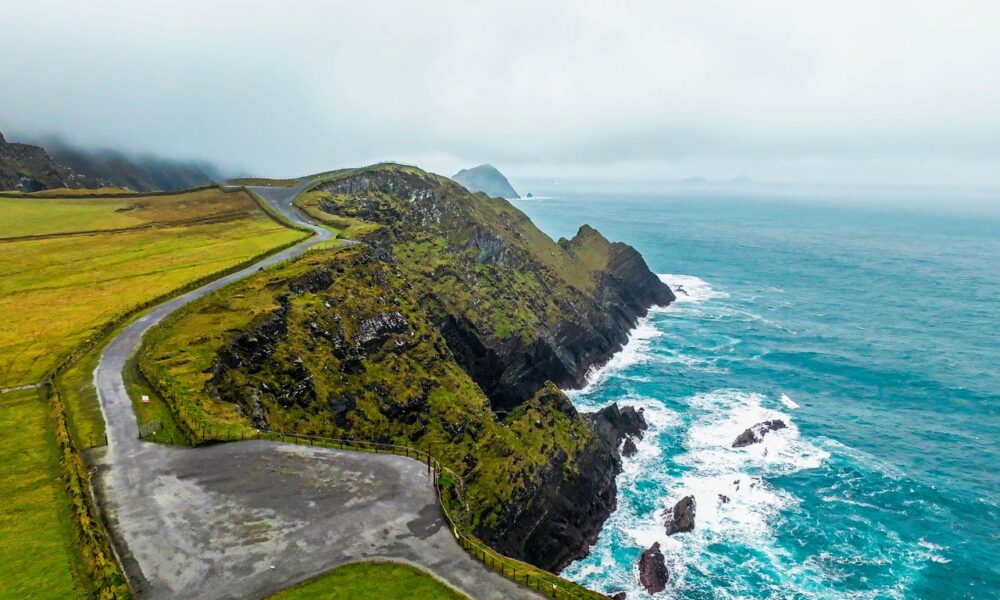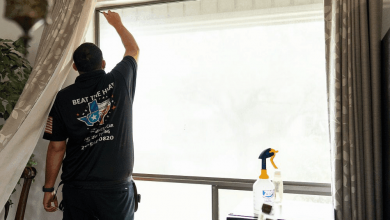Beyond the Tourist Trail: Discovering Ireland's Hidden Cultural Treasures

Ireland’s emerald landscapes and ancient stonework tell stories that stretch back millennia, but the true magic of the island lies in its living cultural heritage. While most visitors are drawn to the striking Cliffs of Moher or the bustling streets of Dublin, those seeking a more authentic connection with Ireland will find it through the country’s rich traditions, language, and folklore that continue to thrive beyond the tourist trail.
For travellers looking to connect with the heart of Irish culture, exploring the country’s ancient wisdom through Irish Seanfhocail (proverbs) offers a profound glimpse into the Irish mindset. These pithy sayings have been passed down through generations, carrying centuries of accumulated wisdom in just a few well-chosen words. As you journey through Ireland, you’ll discover that these proverbs aren’t merely historical curiosities—they remain woven into everyday conversations, offering guidance and wit that feels remarkably relevant today.
Another beautiful way to experience authentic Irish culture is through the language of farewell. The traditional Irish goodbye blessings extend far beyond a simple “goodbye,” often invoking protection, good fortune, and a promise of reunion. Learning these phrases allows visitors to participate in a cultural tradition that locals deeply appreciate, creating moments of genuine connection that transcend typical tourist interactions.
The mystical landscape of Ireland becomes even more captivating when you understand the ancient tales that give meaning to its hills, lakes, and stone circles. Exploring the realm of Celtic mythology creatures reveals a fascinating pantheon of beings that once populated the Irish imagination—from the noble Tuatha Dé Danann to mischievous leprechauns and shape-shifting selkies. Many of these mythological sites can be visited today, allowing travellers to walk in the footsteps of heroes and gods from Ireland’s ancient past.
For those who wish to delve deeper into Irish culture, learning a few phrases in the Irish language creates an immediate bond with locals who appreciate the effort to engage with their heritage. The musical cadence of traditional Irish greetings offers more than just practical communication—it provides insight into a worldview shaped by the island’s unique history and environment. Even simple phrases can open doors to authentic experiences that might otherwise remain closed to visitors.
Experiencing Authentic Irish Culture Beyond the Guidebooks
While guidebooks might direct you to popular sites, experiencing authentic Irish culture requires venturing beyond well-trodden paths. Throughout Ireland, small communities maintain traditions that have largely escaped commercialisation, offering visitors rare glimpses into practices that have sustained Irish identity through centuries of change.
In rural villages across the country, traditional music sessions continue to flourish not as performances for tourists but as genuine community gatherings. Unlike scheduled shows in popular pubs, these authentic sessions often happen spontaneously, with musicians gathering to share tunes passed down through generations. The best sessions typically occur midweek in small local pubs where tourists rarely venture, beginning late and continuing until the early hours of the morning.
To find these authentic experiences, travellers should consider spending extended time in smaller communities rather than rushing between major attractions. Places like Dingle in County Kerry, Doolin in County Clare, and Ardara in County Donegal maintain strong musical traditions while remaining somewhat off the typical tourist itinerary. Here, patience and respectful observation are rewarded with cultural experiences that feel genuine rather than staged.
https://www.youtube.com/watch?v=-PZ-U7NSPjI
Seasonal Celebrations: Timing Your Visit for Cultural Immersion
The timing of your visit to Ireland can dramatically affect the cultural experiences available. While summer brings longer days and generally better weather, the authentic festival calendar offers compelling reasons to consider travel during other seasons.
Imbolc (1 February) marks the beginning of spring in the Celtic calendar, celebrated today as St. Brigid’s Day. Throughout the country, communities craft traditional Brigid’s crosses from rushes, continuing a practice that predates Christianity. In Kildare, where St. Brigid established her famous monastery, the festival includes workshops on traditional crafts, celtic spirituality, and ancient healing practices.
Bealtaine (1 May) historically celebrated the start of summer with bonfires and rituals to protect livestock. Modern celebrations maintain this connection to agriculture and fertility, with communities in the west of Ireland still lighting ceremonial fires on hilltops. For visitors, these festivities offer a rare opportunity to experience customs largely unchanged for centuries.
Lughnasa (1 August) traditionally marked the beginning of the harvest season. Today, mountain pilgrimages continue on “Reek Sunday” when thousands climb Croagh Patrick in County Mayo. Throughout the country, harvest festivals feature traditional foods, music, and ancient games that connect modern Irish people with their agricultural heritage.
Samhain (31 October), now widely known as Halloween, originated in Ireland as the Celtic new year when the boundary between this world and the Otherworld thinned. The town of Derry in Northern Ireland hosts one of Europe’s largest Halloween festivals, blending ancient Celtic traditions with contemporary celebration. In rural communities, older customs persist, including divination games and the lighting of ceremonial fires.
Regional Cultural Variations: Exploring Ireland’s Diverse Traditions
One of Ireland’s most fascinating aspects is how cultural traditions vary significantly across relatively short distances. The island’s complex history has created distinct regional identities that offer travellers multiple perspectives on Irish heritage.
In the Gaeltacht regions where Irish remains the daily language, cultural traditions maintain their strongest connection to the past. The Aran Islands off Galway’s coast, the Dingle Peninsula in Kerry, and parts of Donegal offer immersive experiences in communities where traditional music, storytelling, and crafts remain integral to daily life rather than preserved as tourist attractions.
Northern Ireland presents a different cultural landscape, where traditions reflect complex histories of plantation, industrialisation, and political division. Here, visitors can explore both the shared aspects of Irish culture and the distinct Ulster-Scots heritage that has shaped the region’s unique identity.
The midlands and eastern regions, historically subjected to greater Anglo influence, developed cultural expressions that blend native Irish traditions with imported elements. In counties like Kilkenny and Meath, this cultural fusion is evident in architectural styles, musical traditions, and even linguistic patterns that differ subtly from western regions.
Authentic Interactions: Connecting with Local Knowledge Keepers
Among the most rewarding experiences for cultural travellers in Ireland is connecting with individuals who maintain traditional knowledge and practices. Throughout the country, master craftspeople, musicians, storytellers, and language experts continue ancient traditions while adapting them to contemporary contexts.
In County Clare, traditional boat builders still construct currachs using techniques passed down through generations. These lightweight boats, made with wooden frames covered in tarred canvas, have been used on Ireland’s western coast for centuries. Visitors can arrange demonstrations with local craftspeople who explain not just the technical aspects of construction but the cultural significance of these vessels in coastal communities.
Similarly, throughout the country, traditional storytellers or seanchaí maintain the oral tradition that preserved Irish mythology, history, and local lore before widespread literacy. While commercial storytelling sessions exist in tourist areas, more authentic experiences can be found through local cultural centres and festivals where storytellers share tales not primarily for visitors but as a continued practice of cultural transmission.
For those interested in traditional crafts, numerous small workshops maintain practices like weaving, blacksmithing, and basket making. Unlike large commercial operations, these small-scale craftspeople typically welcome visitors interested in learning about traditional techniques and the cultural context of their work.
Cultural Sensitivity: Approaching Irish Traditions Respectfully
To experience Irish culture authentically, travellers should approach local traditions with respect and cultural sensitivity. This means acknowledging that what might seem like quaint customs to visitors remain meaningful practices to many Irish people.
Religious sites in particular deserve appropriate respect. While ancient monastic ruins and holy wells attract visitors for their historical and architectural significance, many remain active places of pilgrimage and devotion. Visitors should observe local customs, such as walking clockwise around holy wells or leaving small offerings at sacred trees.
Similarly, traditional music sessions have specific unwritten protocols. Visitors are generally welcome but should remember these are not performances for tourists but communal activities with their own etiquette. Taking photos without permission, loud conversation during music, or joining in without invitation can disrupt experiences that locals value as expressions of community and identity.
When engaging with Irish language and folklore, travellers should avoid romanticising or trivialising elements of culture that have profound significance for Irish people. This means moving beyond stereotypical representations of Ireland and engaging with the living, evolving culture rather than seeking an idealised version of “traditional” Ireland frozen in time.
Bringing Cultural Experiences Home: Meaningful Souvenirs
While physical souvenirs provide tangible reminders of travel, the most valuable aspects of cultural immersion are the skills, knowledge, and perspectives travellers bring home. Throughout Ireland, workshops offer opportunities to learn traditional crafts, music, dance, and cooking techniques that provide deeper understanding than purchased souvenirs.
Many cultural centres offer short courses in traditional music, teaching basic techniques on instruments like the tin whistle, bodhrán (drum), or fiddle. Even beginners can learn enough in a few hours to understand the structure of Irish music and perhaps play a simple tune.
Similarly, workshops in traditional crafts like weaving, pottery, or basket making allow visitors to learn from skilled practitioners while creating personal souvenirs that represent not just Ireland but their own engagement with its cultural traditions.
Cooking classes focusing on traditional Irish food provide both cultural insights and practical skills to bring home. Beyond well-known dishes, these classes often explore the historical context of Irish food traditions and their connection to the agricultural calendar and local ecosystems.
For those particularly interested in language, intensive Irish courses ranging from weekend workshops to summer schools offer structured immersion experiences, often in Gaeltacht regions where students can practice with native speakers outside the classroom.
Conclusion: Cultural Heritage as a Living Tradition
The true richness of Irish cultural heritage lies not in museum displays or reconstructed villages but in the living traditions maintained by communities throughout the island. For travellers willing to venture beyond standardised tourist experiences, Ireland offers opportunities for genuine cultural exchange and understanding.
By approaching Irish traditions with respect, curiosity, and patience, visitors can experience aspects of the culture that remain vibrant and meaningful rather than preserved as performances for tourism. These authentic encounters create memories and insights far more valuable than typical tourist experiences.
“At Connolly Cove.com, we believe that true cultural understanding comes from genuine engagement with living traditions,” says Ciaran Connolly, Founder of ConnollyCove. “The most meaningful travel experiences in Ireland happen when visitors connect with communities who maintain cultural practices not as performances but as expressions of identity and continuity. These encounters transform tourism from consumption to exchange, benefiting both travellers and the communities they visit.”
To discover more authentic Irish cultural experiences and detailed travel guides, visit ConnollyCove.com, where you’ll find resources to help plan your own journey beyond the tourist trail.

Source: Beyond the Tourist Trail: Discovering Ireland's Hidden Cultural Treasures




